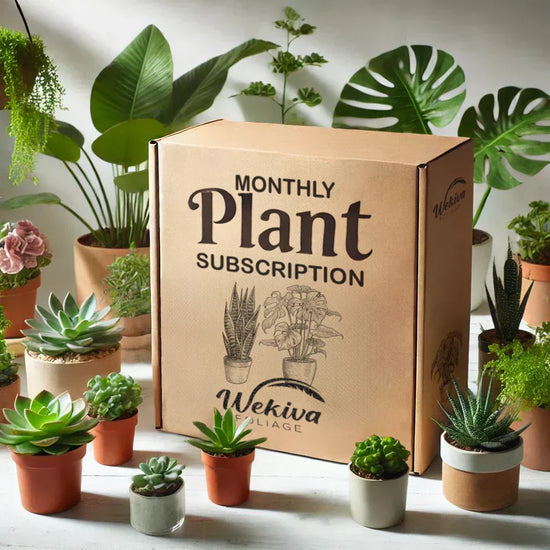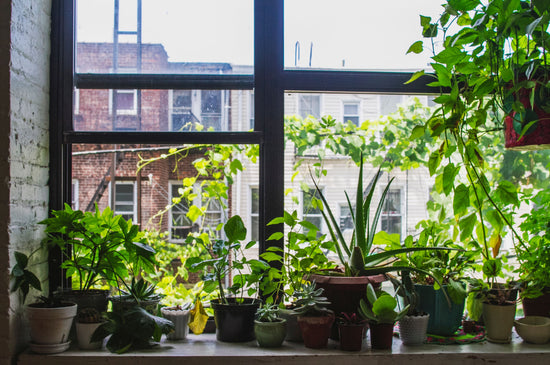How to Determine the Light Levels in Your Home or Apartment for Plants
Understanding the light levels in your home or apartment is key to choosing the right plants and ensuring they thrive. Light is a crucial factor in plant health, and different plants have varying requirements for sunlight. Whether your space is bathed in natural light or tucked in a shady corner, assessing light levels can help you create a successful indoor garden. This guide walks you through determining the light levels in your space and selecting plants accordingly.
Why Light Matters for Plants
Light is essential for photosynthesis, the process by which plants produce energy. Insufficient or excessive light can affect a plant’s growth, health, and appearance. Matching your plants to your home's lighting conditions ensures they receive the right amount of energy to thrive.
Types of Light Levels
-
Bright, Direct Light
- Description: Areas where sunlight streams directly onto the surface for several hours a day, such as south-facing windows.
- Best for: Sun-loving plants like succulents and cacti.
-
Bright, Indirect Light
- Description: Spaces with lots of natural light but without direct sun rays, such as east-facing windows or rooms with sheer curtains.
- Best for: Tropical plants like monstera, ferns, and philodendrons.
-
Medium Light
- Description: Areas with filtered or diffused light, such as spots near west-facing windows or rooms with partial sunlight.
- Best for: Low-light plants like pothos and dracaena.
-
Low Light
- Description: Spaces far from windows or with little natural light, like offices or north-facing rooms.
- Best for: Shade-tolerant plants like snake plants and ZZ plants.
How to Assess Light Levels in Your Space
-
Observe Sunlight Patterns
- Track the movement of sunlight in your home throughout the day. Note how long each area receives direct sunlight and where shadows fall.
-
Use the Shadow Test
- Place your hand between a light source and a flat surface:
- Strong, clear shadow: Bright, direct light.
- Soft, fuzzy shadow: Bright, indirect light.
- Barely visible shadow: Medium or low light.
- Place your hand between a light source and a flat surface:
-
Consider Window Orientation
- South-facing: Bright, direct light most of the day.
- East-facing: Bright, indirect light in the morning.
- West-facing: Intense afternoon light, often filtered.
- North-facing: Low to medium light throughout the day.
-
Check for Obstacles
- Trees, buildings, curtains, and blinds can block sunlight and reduce light levels indoors. Adjust plant placement accordingly.
-
Use a Light Meter
- A light meter or smartphone app can measure foot-candles (fc), the unit of light intensity.
- Bright, direct light: 10,000+ fc.
- Bright, indirect light: 1,000–10,000 fc.
- Medium light: 500–1,000 fc.
- Low light: Under 500 fc.
- A light meter or smartphone app can measure foot-candles (fc), the unit of light intensity.
How to Adapt Your Space for Plants
-
Maximize Natural Light
- Keep windows clean and open blinds during the day. Use mirrors to reflect light into darker areas.
-
Use Grow Lights
- For spaces with insufficient natural light, invest in LED grow lights to supplement light levels.
-
Rotate Plants
- Rotate plants weekly to ensure all sides receive even light exposure.
-
Choose Plants Based on Light
- Match plant needs with light levels. For example:
- Bright, indirect light: Monstera and philodendrons.
- Medium light: Dracaena and snake plants.
- Low light: ZZ plants and pothos.
- Match plant needs with light levels. For example:
FAQs About Lighting for Plants
Q: Can plants adapt to low light if they usually need bright light?
A: Some plants can adapt over time, but they may grow slower or develop smaller leaves. It’s best to match plants with their preferred light conditions.
Q: How far should plants be from a window?
A: It depends on the light intensity. Place sun-loving plants closer to windows and shade-tolerant plants farther away.
Q: Do artificial lights work as well as sunlight?
A: LED grow lights can effectively mimic sunlight, especially when natural light is insufficient.
Q: How do I know if my plant isn’t getting enough light?
A: Signs include yellowing leaves, leggy growth, and a lack of new growth.
Understanding and adapting your space's light levels can help your plants thrive and create a lush, vibrant indoor garden. By choosing plants suited to your home's lighting and making small adjustments, you can enjoy greenery in every corner of your home.





